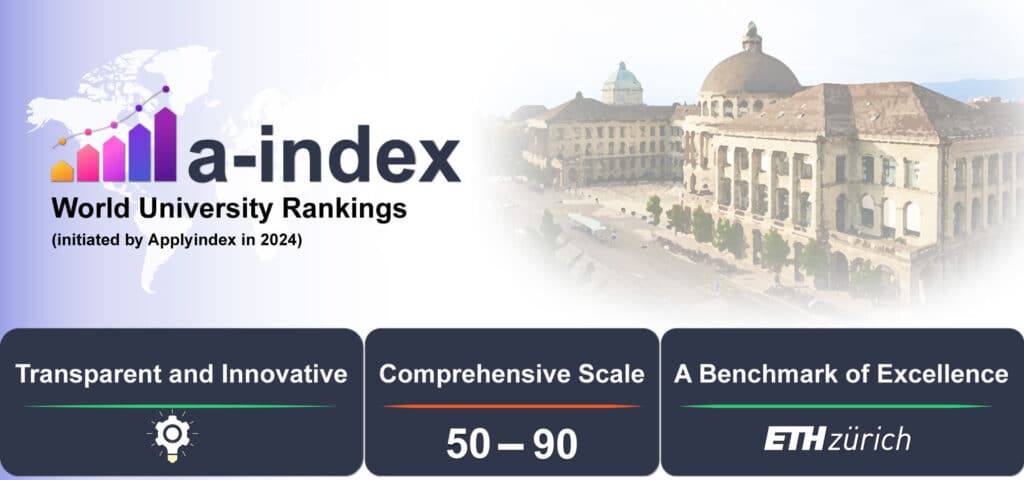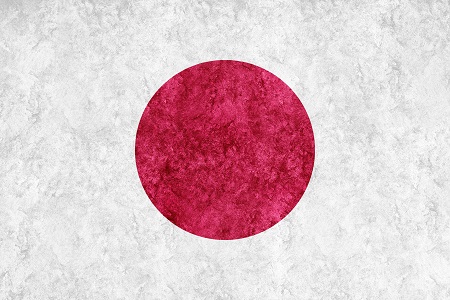Welcome to a-index University Rankings, a groundbreaking paradigm in global university rankings. Applyindex proudly introduces a novel system for ranking universities worldwide based on their a-index values. Launched in mid-2024, our World University Rankings offer a unique perspective by focusing on the challenges of securing PhD positions with full funding. Unlike traditional rankings from QS Top Universities, Times Higher Education, US News, and ARWU, the Applyindex ranking system emphasizes the competitiveness and toughness of the application process to secure positions with higher fully funded PhD chances. It is not designed for professional doctorate positions, such as MD, PharmD, EdS, EdD, DBA, DHSc, EngD, DNP, and DrPH.
What is the a-index for Universities?
The a-index is one of the various Applyindex’s tools. While it derives from both our brand “Applyindex” and concept of “Admission index”, it is written as a-index, rather than aindex, A-index, Aindex, or AIndex, to prevent confusion with “ai, Ai, or AI (artificial intelligence)”. It is a comprehensive metric, calculated using a systematic methodology, that ranges from 50 to 90 for universities. A higher value reflects a more competitive and rigorous admission process for securing PhD positions with higher funded PhD chances. It is important to know that the a-index of universities is calculated only for PhD, not professional doctoral positions, such as MD, PharmD, EdS, EdD, DBA, DHSc, EngD, DNP, and DrPH.
This sophisticated index is derived through a systematic methodology from the amalgamation of fifteen factors (including nine direct and six indirect factors), each carefully selected to reflect the complexities of a university’s academic environment. The nine key factors are:
- The acceptance rate with full financial support (tuition waiver + monthly stipend) at the graduate and postgraduate levels
- The minimum entry requirements for PhD applicants (e.g., GPA, language proficiency) set by the Graduate Office
- The annual number of scientific publications (e.g., original research papers, review articles, communications)
- The faculty-to-PhD-candidate ratio
- The number and value of research grants awarded to academic staff
- The university’s or institution’s total citation count
- The university’s or institution’s h-index
- The average h-index of academic staff members
- The type of university or institution (public or private)
a-index Formula Optimization and Refinement
Please be aware that the a-index value of universities is continuously evolving, and the calculation methodology, number, or type of criteria used in its calculation may change over time. For instance, as we gather more data from universities and institutions, factors with minimal impact may be removed from the universities’ a-index formula. Conversely, new influential parameters may be introduced to enhance its accuracy and relevance. In short, the optimization process is ongoing (perhaps eternal!)
a-index University Rankings
Universities are ranked based on their a-index values; the higher the a-index, the higher their rank, and the more competitive they are in offering full financial aid. A higher rank indicates a more challenging process to find a PhD with funding. Join us on this revolutionary journey as we redefine the landscape of university rankings with the a-index, i.e., an innovative tool designed to empower PhD applicants to make informed decisions. Illustrating the power of the a-index, ETH Zurich emerges as a beacon of academic rigor, boasting an impressive a-index of 90. This signifies that ETH Zurich sets the benchmark for the most challenging PhD admission processes, making it an institution that demands excellence and commitment from its aspirants.
a-index University Rankings by Continent
The a-index University Rankings system evaluates over 750 universities across 28 countries. Sixteen countries are developed countries (e.g., the USA, the UK, Australia, Canada, Germany, and France) that are especially popular among international students from developing countries (e.g., Nigeria, Pakistan, Iran, and many others). The ranking spans five continents: Africa, Asia, Europe, North America, and Australia (Oceania). Here is the full list of countries covered by the a-index University Rankings:
a-index University Rankings in Africa
Africa has one representative ranked among the 800 most competitive universities worldwide, i.e., the University of Cape Town in South Africa. It holds the 212th position in the a-index World University Rankings, with an a-index score of 74.4. Known for its strong research output and competitive admission process, it remains a leading destination for international students seeking fully-funded PhD chances. Situated at the foot of the iconic Table Mountain and overlooking the Atlantic Ocean, the University of Cape Town offers academic excellence and access to some of the world’s most stunning natural scenery. South Africa is renowned for its diverse landscapes, from safari parks and lush vineyards to coastal drives and mountain ranges.
a-index University Rankings in Asia
Asia is the second most represented continent in the a-index University Rankings, showcasing the diversity and academic strength of 8 countries: China, Hong Kong, India, Japan, Malaysia, Singapore, South Korea, and Taiwan. With 61 ranked institutions, China leads the continent, reflecting its massive investment in research infrastructure, international collaboration, and the growing competitiveness of its universities in securing external research grants and publishing high-impact studies. Japan, in second place with 48 universities, maintains a long-standing tradition of academic excellence, particularly in engineering, materials science, and life sciences, supported by top-tier institutions like the University of Tokyo and Kyoto University.
South Korea and Singapore are known for their innovation-driven higher education systems. Singapore, despite its small size, consistently ranks among the world’s top countries in terms of research funding per capita and academic impact, with institutions like NUS setting global benchmarks. South Korea continues to push boundaries in technology and engineering, with universities tightly integrated into the country’s research and industrial ecosystems. India, Taiwan, and Hong Kong contribute robustly to the continent’s research output. India has seen a sharp rise in PhD enrollments and international collaborations, while Taiwan’s universities focus strongly on semiconductor and electronic engineering research. Hong Kong institutions, like HKU and HKUST, are globally respected for their interdisciplinary research and English-language graduate programs.
Meanwhile, Malaysia is emerging as a regional academic hub, particularly for international students. This country has expanded its higher education sectors significantly over the last two decades, with increased funding for research, partnerships with global universities, and policies aimed at attracting PhD students worldwide. These eight countries showcase Asia’s rich and evolving academic landscape, marked by diverse strengths, rising competitiveness, and a shared focus on global research excellence.
The Middle East (in western Asia) is represented solely by Israel among the 800 most competitive universities in the a-index Global University Rankings. With a strong academic and research culture, Israel continues to significantly impact the global higher education landscape despite its small size. Leading the way is the Hebrew University of Jerusalem, which holds an impressive a-index score of 76.2 in the 2025 rankings. Renowned for its cutting-edge research and international collaborations, it is the most selective Israeli university for offering PhD positions to international students with full financial support.
Located in Jerusalem, a historic and vibrant city, the university provides scholars access to world-class research facilities, a rich academic heritage, and a dynamic cultural experience. Israel’s broader academic ecosystem is equally robust, with institutions like the Technion – Israel Institute of Technology and Tel Aviv University known for their science, technology, and biomedical research innovation. In cities like Tel Aviv, known for its startup culture and tech innovation, and Haifa, with its diverse academic community, international students find academic excellence and a high quality of life. The country’s emphasis on research funding, interdisciplinary collaboration, and strong links between academia and industry makes Israel a compelling destination for aspiring PhD students worldwide.
a-index University Rankings in Europe
a-index University Rankings: EU Countries
As expected, Europe is the continent with the most represented countries in the a-index University Rankings system. The EU countries included in the a-index University Rankings are the following 11: Austria, Belgium, Denmark, Finland, France, Germany, Ireland, Italy, the Netherlands, Spain, and Sweden. With Université PSL (global rank: 37 and a-index: 87), France leads the EU countries in our ranking system, followed by the TU Munich in Germany (global rank: 41 and a-index: 86.7).
The European Union has long been a global leader in academic excellence and collaborative research, making it a highly attractive destination for PhD candidates worldwide. EU universities benefit from strong institutional frameworks, consistent quality assurance, and substantial public and private investments in research and innovation. Through programs like Horizon Europe, the EU funds thousands of research projects annually, encouraging cross-border collaboration and offering generous grants to institutions and researchers. These opportunities extend to international PhD students, many of whom receive full funding through structured doctoral programs.
Moreover, the EU strongly emphasizes interdisciplinary research, societal impact, and technological advancement across sectors such as climate science, engineering, digital innovation, health, and social policy. This commitment to research excellence, coupled with high living standards and a diverse cultural experience, solidifies the EU as one of the most vibrant academic ecosystems in the world for doctoral education.
a-index University Rankings: Non-EU Countries
The non-European countries that have representatives in the a-index global university rankings are the following 3: Norway, Switzerland, and the United Kingdom. The University of Oslo leads Norwegian universities in our ranking system with an a-index of 81.7, placing it at 103rd. Switzerland has two universities among the top 20 strictest institutions in our rankings, with ETH Zurich ranked 1st in the world. The UK boasts 90 representatives in the a-index World University Rankings, led by the University of Cambridge, which holds an excellent a-index of 89.8.
These countries are globally recognized for their exceptional academic and research environments, backed by strong government support and international collaborations. In Norway, higher education is tuition-free for all students, including internationals, and universities like the University of Oslo benefit from robust public research funding in fields ranging from climate science to biotechnology.
Switzerland, with its world-class institutions like ETH Zurich and EPFL, is a hub for cutting-edge research and innovation. The country has one of the highest research and development expenditures per capita in the world and is home to international organizations such as Empa. This makes Swiss universities particularly appealing for PhD candidates seeking interdisciplinary and high-impact research opportunities.
The United Kingdom continues to be a leading destination for international researchers thanks to its prestigious universities, state-of-the-art research facilities, and a long-standing academic tradition. With major funding bodies like UKRI and access to Horizon Europe programs, the UK provides ample opportunities for PhD positions with full financial aid, particularly in fields like artificial intelligence, medicine, engineering, and social sciences.
a-index University Rankings in North America
The United States and Canada are among the most popular destinations for higher education, both located on the continent of North America. The USA is the most represented country by the a-index World University Rankings system, with over 200 ranked institutions. The most competitive American university for securing positions with highly funded PhD chances is Stanford University, while the University of Toronto ranks as the most selective Canadian institution in the a-index University Rankings. The USA and Canada have 17 and 2 universities, respectively, among the top 50 strictest global institutions when it comes to offering PhD positions with full financial support.
Both countries boast world-class research ecosystems supported by substantial governmental and institutional funding. In the US, federal agencies such as the National Science Foundation (NSF), National Institutes of Health (NIH), Department of Energy (DOE), and NASA invest billions of dollars annually in research projects across disciplines. These grants often fund PhD students directly or through faculty-led projects, providing generous stipends, tuition waivers, and access to state-of-the-art research facilities.
Similarly, Canada is home to a robust and growing research community, supported by federal agencies like the Natural Sciences and Engineering Research Council of Canada (NSERC), Social Sciences and Humanities Research Council (SSHRC), and Canadian Institutes of Health Research (CIHR). Programs such as the Vanier Canada Graduate Scholarships and Canada First Research Excellence Fund (CFREF) make the country particularly attractive to top-tier international PhD candidates. The close collaboration between universities, government, and industry in the US and Canada ensures that PhD students are engaged in cutting-edge research and prepared for impactful careers in academia, industry, and beyond.
a-index University Rankings in Oceania
Oceania has five universities ranked among the top 50 most competitive universities in the world when offering PhD positions with full financial aid. Although New Zealand is home to several high-quality institutions, all five top-tier universities are located in Canberra, Melbourne, and Sydney in Australia. The strictest Australian university is the Australian National University (ANU), ranked 20th with an a-index of 88.6, while the most competitive university in New Zealand is the University of Auckland, ranked 85th with an a-index of 83.1.
Australia and New Zealand are globally recognized for their excellence in research, with both countries investing heavily in academic innovation, sustainability, medical sciences, and cutting-edge technologies. Australia’s research landscape is bolstered by national funding bodies like the Australian Research Council (ARC) and National Health and Medical Research Council (NHMRC), which support a wide range of high-impact research projects and PhD scholarships. Likewise, New Zealand supports academic research through the Royal Society Te Apārangi, Marsden Fund, and Tertiary Education Commission, providing significant resources for PhD candidates.
Beyond their academic strengths, Australia and New Zealand offer breathtaking landscapes and vibrant cultural experiences. From the sun-kissed beaches and cosmopolitan cities of Sydney and Melbourne to the serene mountains and fjords of New Zealand’s South Island, PhD candidates benefit from a lifestyle that blends academic rigor with natural beauty. These countries provide a safe, inclusive, and inspiring environment that attracts thousands of international students each year, making them ideal destinations for ambitious researchers seeking educational excellence and quality of life.
Frequently Asked Questions (FAQs)
What is the a-index value of universities, and how is it calculated?
The a-index is a comprehensive metric, calculated via a systematic methodology, ranging from 50 to 90, that assesses the competitiveness of universities, particularly concerning the difficulty of securing PhD positions (not professional doctoral positions) with PhD-funded chances. It is derived from nine key factors.
How reliable is the a-index University Rankings system?
The a-index is a highly reliable ranking system, built on a robust, big data-driven formula. By analyzing vast datasets, the a-index provides an accurate, data-backed reflection of institutional strictness and competitiveness.
How does the a-index differ from other university ranking systems like QS or Times Higher Education?
Unlike traditional university rankings that emphasize general academic reputation or undergraduate education quality, the a-index specifically focuses on the competitiveness of securing PhD positions (not professional doctoral positions) with full financial aid.
Is the a-index University Rankings system updated regularly?
Yes, the a-index is continuously evolving. The factors and their weightings in the calculation may be refined over time to enhance accuracy and relevance, ensuring that the rankings reflect the current academic landscape.
Are there regional variations in the a-index rankings?
Yes, a-index University Rankings by Region allows applicants to explore and compare institutions within specific regions, such as Southern Africa, East Asia, Northern Europe, the Middle East, etc. This regional breakdown helps students consider geographical preferences alongside academic competitiveness.




















